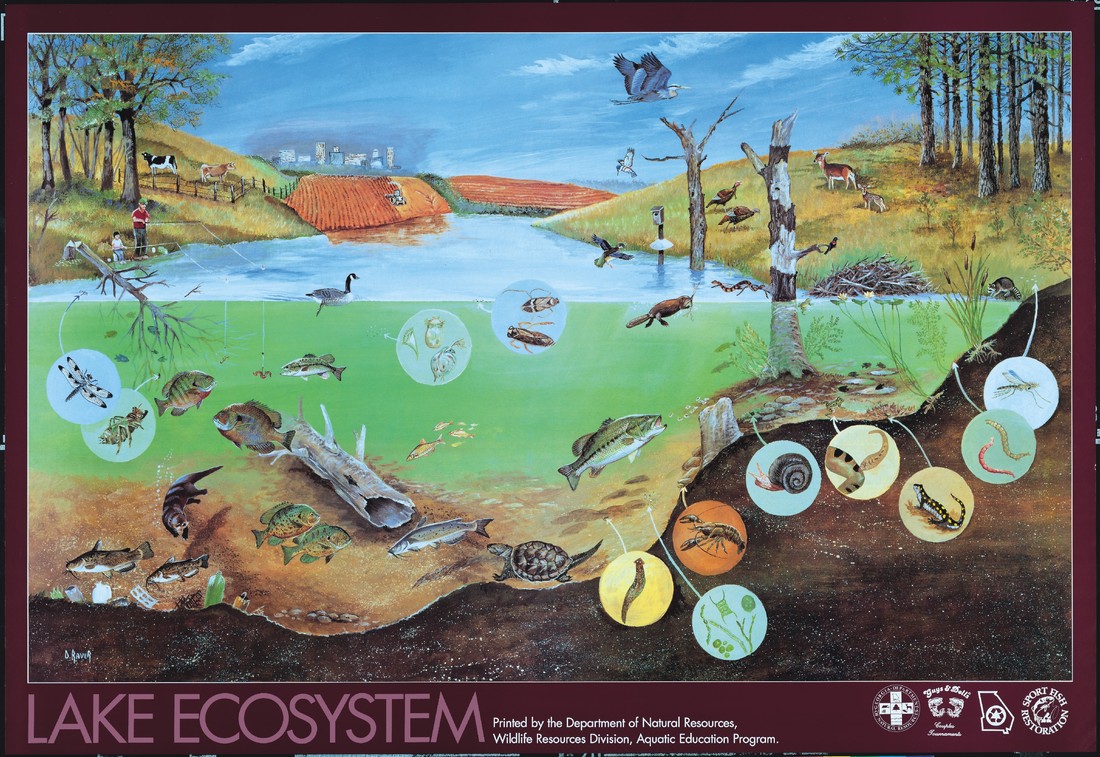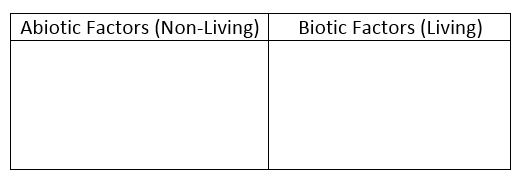Consider this ecosystem, what do you see?
Have a look at the ecosystem above.
- What can you see?
- How could you group the things you see?
- Are there any living things that work together?
- Are there any living things that depend on others for their survival?
- Is this ecosystem healthy? What makes you say that?
- What else would you like to know about this ecosystem?
What is an ecosystem?
An ecosystem consists of all the living (biotic) and non-living things (abiotic) in a specific natural setting. Plants, animals, insects, microorganisms, rocks, soil, water and sunlight are major components of many ecosystems.
All types of ecosystems fall into one of two categories: terrestrial or aquatic. Terrestrial ecosystems are land-based, while aquatic are water-based.
The major types of ecosystems are forests, grasslands, deserts, tundra, freshwater and marine.
The word “biome” may also be used to describe terrestrial ecosystems which extend across a large geographic area, such as tundra. Keep in mind, however, that within any ecosystem, specific features vary widely -- for instance, an freshwater ecosystem in Dandenong will contain vastly different species than a freshwater ecosystem in the Northern Territory.
Biodiversity, means the differences between living things. Biodiversity can be seen between the species in an ecosystem or between members of the same species. In any ecosystem, the biodiversity seen will be greater in ecosystems that are healthy, compared to those that are unhealthy.
All types of ecosystems fall into one of two categories: terrestrial or aquatic. Terrestrial ecosystems are land-based, while aquatic are water-based.
The major types of ecosystems are forests, grasslands, deserts, tundra, freshwater and marine.
The word “biome” may also be used to describe terrestrial ecosystems which extend across a large geographic area, such as tundra. Keep in mind, however, that within any ecosystem, specific features vary widely -- for instance, an freshwater ecosystem in Dandenong will contain vastly different species than a freshwater ecosystem in the Northern Territory.
Biodiversity, means the differences between living things. Biodiversity can be seen between the species in an ecosystem or between members of the same species. In any ecosystem, the biodiversity seen will be greater in ecosystems that are healthy, compared to those that are unhealthy.
What makes a healthy ecosystem?
A healthy ecosystem will have the right conditions for a wide range of organisms to survive and thrive. A healthy ecosystem will also have little pollution.
Consider the freshwater ecosystem of the Dandenong Wetlands
What abiotic and biotic factors would you expect to see in this environment?
|
In your workbook, within a table, classify the following as biotic and abiotic:
|
What advantage does biodiversity in an ecosystem provide?
Teacher resources
Curriculum Links
This Essential Question links to the Victorian Curriculum Standards for Science Level 7 and 8
Biological Science
Questioning and predicting
Biological Science
- There are differences within and between groups of organisms; classification helps organise this diversity(VCSSU091)
- Interactions between organisms can be described in terms of food chains and food webs and can be affected by human activity (VCSSU093)
- Water is an important resource that cycles through the environment (VCSSU101)
- Some of Earth’s resources are renewable, but others are non-renewable (VCSSU100)
Questioning and predicting
- Identify questions, problems and claims that can be investigated scientifically and make predictions based on scientific knowledge (VCSIS107)



